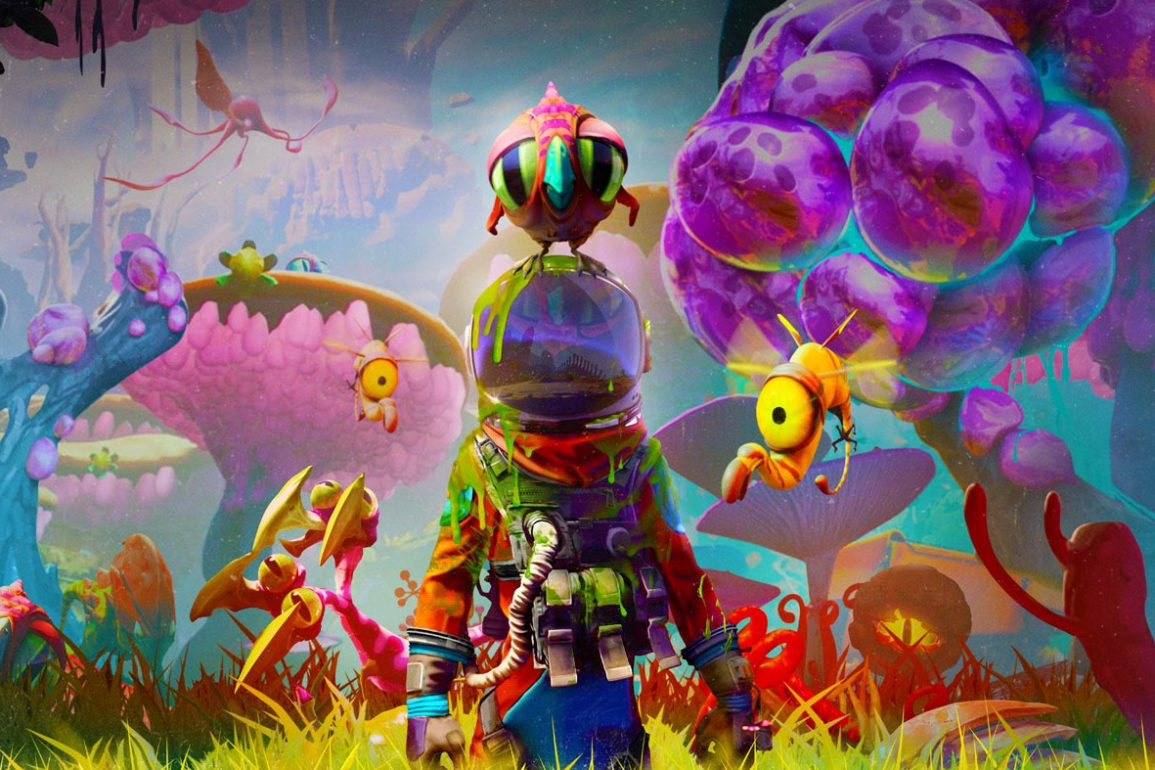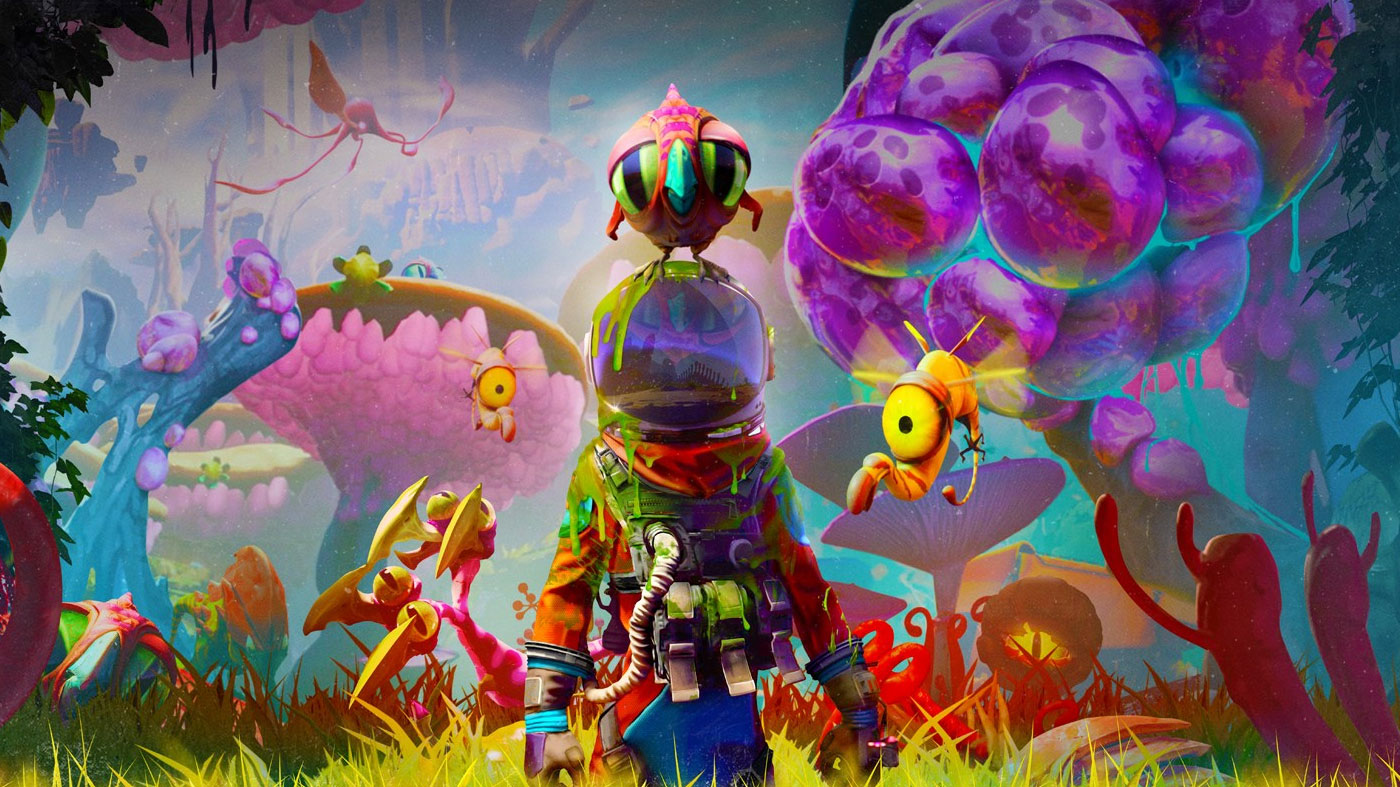Rarely am I surprised as much as I was with Journey to the Savage Planet. Perhaps through my own fault, I had looked at it and assumed it was, yet another indie game focused on exploration with minimal combat and survival elements. Those games aren’t bad, mind you, just a market that I’ve grown tired of. But, after spending some decent time with Savage Planet, I was surprised to discover it’s just like one of my favourite games of all time – Metroid Prime. And while it never reaches those lofty heights, it makes an earnest attempt to do so in an impressive way.
Journey To The Savage Planet wears it’s satirical nature on its sleeve always. You are an astronaut of sorts who has been sent to this foreign world by Kindred Aerospace, the fourth-best space exploration company. Because of their illustrious status, they have no money and thus give you little equipment to explore the planet. So, it’s your job, as a dutiful employee, to scour every corner of the planet to help determine if it’s a suitable colony site for humanity. Obviously, there’s a little bit more to the planet that you discover as you explore a bit more, but it’s a pretty standard sci-fi story.
When I show people footage of Journey to the Savage Planet they’re quick to recognise similarities with games with a non-linear approach like No Man’s Sky and Astroneer. Honestly, though, this couldn’t be farther from the truth. Savage Planet is unapologetically a love letter to games like Metroid – more specifically Metroid Prime – and makes earnest effort to conjure the best bits of that series. You’re thrown into a foreign world and allowed to explore at your own leisure.
I am more inclined to call Savage Planet a throwback to exploration games like Metroid and perhaps even a little bit like Prey because everything is purposefully designed. There are no procedurally generated elements, but instead well designed and (very) vertically orientated levels to explore. You’ll warp around the planet’s areas as you unlock new equipment and new abilities in order to improve your stats and learn more about the planet. The platforming itself is engaging and some of the more challenging circuits are a joy to pull off – such as stringing together double jumps and grappling hooks to traverse giant gaps.
There’s combat too but it does feel a little bit simplistic at times. You’re eventually given the ability to craft your own pistol, which itself is the main way that you defend yourself against the denizens of the planet. You also eventually learn how to leverage the native flora – including the ingeniously named Bombegranate – to open new pathways and battle stronger enemies too. Combat in Savage Planet has enough depth to feel like more than an afterthought but lacks a certain oomph, a certain feel that makes it as satisfying as it could be. Your shots hit enemies, sure, but the culmination of sound, animation, and feedback makes it feel a bit flat at times.
Thankfully there is a wide variety of enemies that you’ll find on the planet, and even a few bosses too. They feel like a clever way to test both your finesse in combat and platforming prowess. They often gate off major upgrades and/or new locations too, so it’s especially satisfying to defeat them. A game of this scale and type even having bosses was a surprise, but it was even more surprising for them to be both challenging and engaging encounters even if there weren’t that many when the credits rolled.
When you’re not exploring, you’ll be on your ship. This is where you’ll 3D print upgrades for yourself (which themselves use elements harvested from the native fauna) as well as watch video transmissions from Kindred Aerospace. They’re incredible, absurd presentations that really sell the fact that you’re working for a super capitalist entity. The production values on these transmissions are great – they’re all filmed in live-action and help to build the world of Savage Planet.
Owing to its aversion to massive amounts of procedurally generated content, Savage Planet is a focused and honed experience. Most players will be able to get through the critical path within nine to twelve hours, with extra exploration to find absolutely everything easily taking you over the twenty or so hour mark. You’ll want to explore too, as the world of Savage Planet is designed to entice you to do so. It’s why a designed world like this will always trump a procedurally generated one – there’s nothing as satisfying as exploring and finding something a developer has specifically placed there for you to find. It’s well thought out and encourages you to experiment with your tools.
You can also jump into the game with a mate in co-operative modes as well. The co-op works in a similar way to most games – where the host’s progress saves while the person who has joined doesn’t enjoy such a benefit. It begs the question – what’s the point if you’re joining somebody else? But Savage Planet is still fun to mess around in with a friend regardless. It’s online only at this stage but performs admirably with the two or three randomly matched people I experienced during the course of this review.
From the get-go, you’ll appreciate just how bright and colourful Savage Planet is. The whole planet is comprised of a set of floating islands, offering a strikingly beautiful yet impossible-looking setting to explore. Performance and load times are also smooth as butter which alleviates any frustrations after death. But despite this strong art direction, I would’ve perhaps liked to have seen a little bit more variety in the different areas of the planets. While they each have key landmarks, they still all feel too samey overall. The developers have stated they plan to add more biomes, though, so that’s encouraging.
The music in Savage Planet is similarly a bit derivative, consisting mainly of western-inspired twangs that give the whole experience a bit of a Borderlands vibe. Despite this, I can still appreciate that the score is minimalist and unobtrusive, acting as window dressing to your exploration rather than being overbearing or noticeable. The voice work, while sporadic, is great and helps sell the sardonic sense of humour that Savage Planet works so hard to deliver.









